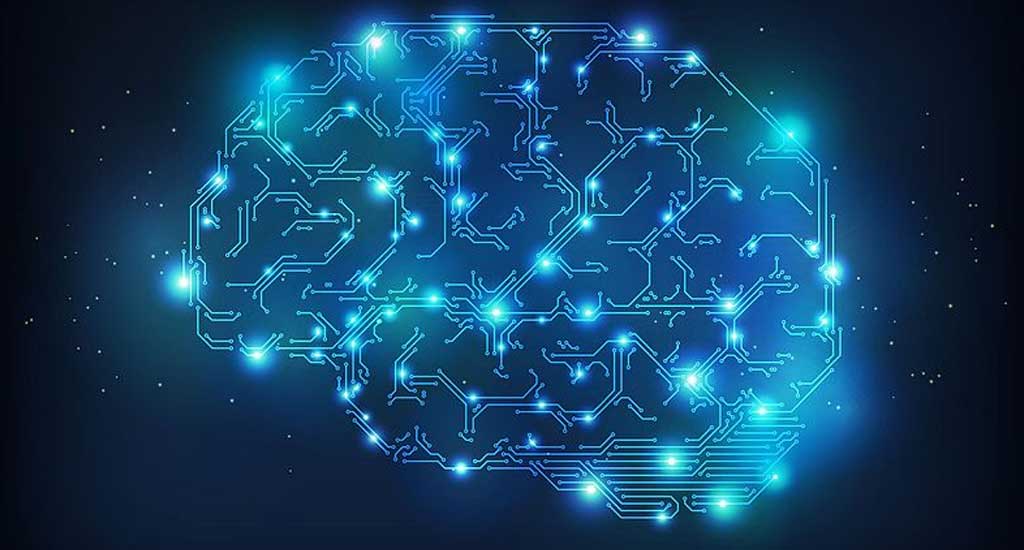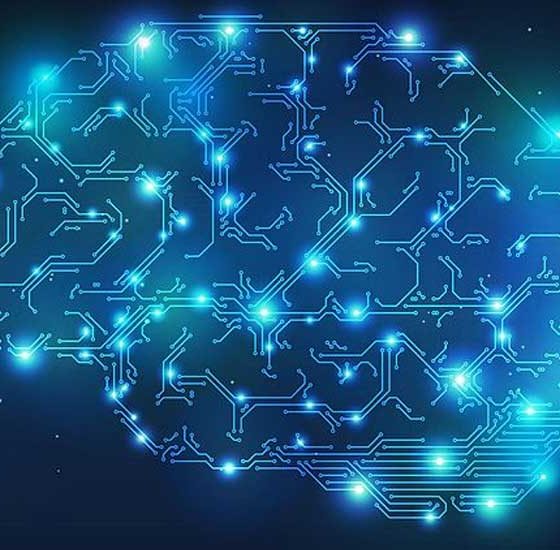

News
Researchers find graphene can strengthen the brain’s neural signals
A recent study from a group of researchers at the International School for Advanced Studies (SISSA) in Italy and the Catalan Institute of Nanoscience and Nanotechnology (ICN2) in Spain have demonstrated how graphene could be combined with neurological tissue, allowing the material to become a valuable tool for medicine and other biological processes.
In a statement to the IEEE Spectrum, Laura Ballerini, a researcher in neurons and nanomaterials at SISSA, stated that the results of the recent study demonstrate that graphene might tune neuronal activities by altering ion mobility at the cell interface depending on the how the single-layer graphene is engineered. According to the researcher, graphene-based nanomaterials have come to represent potential tools in neurology and neurosurgery.
“These materials are increasingly engineered as components of a variety of applications such as biosensors, interfaces, or drug-delivery platforms. In particular, in neural electrode or interfaces, a precise requirement is the stable device/neuronal electrical coupling, which requires governing the interactions between the electrode surface and the cell membrane,” she said.
Graphene has been dubbed as a supermaterial, thanks to its unique set of properties. Graphene, described in simplest terms, is a thin layer of graphite, the same material used in pencil lead. What is particularly remarkable with graphene is that it takes some near-miraculous properties when it is isolated from graphite. At one atom thick, graphene stands as the world’s first two-dimensional material ever discovered. It also boasts a tensile strength of 130 gigapascals, making it ~100 times stronger than steel. Apart from being thin and durable, graphene is also flexible, transparent, seemingly impermeable to most gases and liquids, and most of all, highly conductive.
These properties have allowed graphene to be viewed as a potential game-changer in several fields, including electronics, solar cells, semiconductors, and of course, biomedical technology. Just last year, researchers from the Graphene Flagship developed graphene-based field-effect transistors which have the capability to record brain activity in high resolution while maintaining an optimal level of signal-to-noise ratio (SNR).
Ballerini noted that thanks to graphene’s electrical properties, transparency, and flexibility, the material has become the ideal material candidate for several ongoing researches. Among these studies, the primary goal has been to analyze and investigate how graphene can tune neuronal excitability, as well as to demonstrate that the material can selectively modify membrane-associated neuronal functions. Ballerini and her team’s latest research, for one, operated under the hypothesis that there would be specific interactions between graphene and potassium ions in the extracellular solution which would regulate cell excitability.
“Graphene properties might (thus) affect neuronal information processing through the physical interactions of such a nanomaterial with the biological environment. Nanomaterials might then represent, in general, unconventional tools to gain insights into genuine biological processes,” Ballerini’s team stated in their conclusion to the recent study.
Ballerini and her team’s research could be accessed here.
The applications of graphene are wide, from practical solutions such as water filtration systems and faster internet speeds to measuring brain activity. The material, if any, seems to be tailor-fit for Elon Musk’s neurotechnology startup, Neuralink, which aims to create brain-computer interface systems. Considering that the startup is aimed at developing neural lace technologies, advances in graphene, showcased in these recent studies, could very well help make Musk’s vision of “wizard hats for the brain” a reality.

News
Elon Musk’s Grokipedia surges to 5.6M articles, almost 79% of English Wikipedia
The explosive growth marks a major milestone for the AI-powered online encyclopedia, which was launched by Elon Musk’s xAI just months ago.

Elon Musk’s Grokipedia has grown to an impressive 5,615,201 articles as of today, closing in on 79% of the English Wikipedia’s current total of 7,119,376 articles.
The explosive growth marks a major milestone for the AI-powered online encyclopedia, which was launched by Elon Musk’s xAI just months ago. Needless to say, it would only be a matter of time before Grokipedia exceeds English Wikipedia in sheer volume.
Grokipedia’s rapid growth
xAI’s vision for Grokipedia emphasizes neutrality, while Grok’s reasoning capabilities allow for fast drafting and fact-checking. When Elon Musk announced the initiative in late September 2025, he noted that Grokipedia would be an improvement to Wikipedia because it would be designed to avoid bias.
At the time, Musk noted that Grokipedia “is a necessary step towards the xAI goal of understanding the Universe.”
Grokipedia was launched in late October, and while xAI was careful to list it only as Version 0.1 at the time, the online encyclopedia immediately earned praise. Wikipedia co-founder Larry Sanger highlighted the project’s innovative approach, noting how it leverages AI to fill knowledge gaps and enable rapid updates. Netizens also observed how Grokipedia tends to present articles in a more objective manner compared to Wikipedia, which is edited by humans.
Elon Musk’s ambitious plans
With 5,615,201 total articles, Grokipedia has now grown to almost 79% of English Wikipedia’s article base. This is incredibly quick, though Grokipedia remains text-only for now. xAI, for its part, has now updated the online encyclopedia’s iteration to v0.2.
Elon Musk has shared bold ideas for Grokipedia, including sending a record of the entire knowledge base to space as part of xAI’s mission to preserve and expand human understanding. At some point, Musk stated that Grokipedia will be renamed to Encyclopedia Galactica, and it will be sent to the cosmos.
“When Grokipedia is good enough (long way to go), we will change the name to Encyclopedia Galactica. It will be an open source distillation of all knowledge, including audio, images and video. Join xAI to help build the sci-fi version of the Library of Alexandria!” Musk wrote, adding in a later post that “Copies will be etched in stone and sent to the Moon, Mars and beyond. This time, it will not be lost.”
News
Tesla Model 3 becomes Netherlands’ best-selling used EV in 2025
More than one in ten second-hand electric cars sold in the country last year was a Tesla Model 3.

The Tesla Model 3 became the most popular used electric car in the Netherlands in 2025, cementing its dominance well beyond the country’s new-car market.
After years at the top of Dutch EV sales charts, the Model 3 now leads the country’s second-hand EV market by a wide margin, as record used-car purchases pushed electric vehicles further into the mainstream.
Model 3 takes a commanding lead
The Netherlands recorded more than 2.1 million used car sales last year, the highest level on record. Of those, roughly 4.8%, or about 102,000 vehicles, were electric. Within that growing segment, the Tesla Model 3 stood far ahead of its competitors.
In 2025 alone, 11,338 used Model 3s changed hands, giving the car an 11.1% share of the country’s entire used EV market. That means more than one in ten second-hand electric cars sold in the country last year was a Tesla Model 3, Auto Week Netherlands reported. The scale of its lead is striking: the gap between the Model 3 and the second-place finisher, the Volkswagen ID3, is more than 6,700 vehicles.
Rivals trail as residual values shape rankings
The Volkswagen ID.3 ranked a distant second, with 4,595 used units sold and a 4.5% market share. Close behind was the Audi e-tron, which placed third with 4,236 registrations. As noted by Auto Week Netherlands, relatively low residual values likely boosted the e-tron’s appeal in the used market, despite its higher original price.
Other strong performers included the Kia Niro, the Tesla Model Y, and the Hyundai Kona, highlighting continued demand for compact and midsize electric vehicles with proven range and reliability. No other model, however, came close to matching the Model 3’s scale or market presence.
News
Tesla Model Y Standard Long Range RWD launches in Europe
The update was announced by Tesla Europe & Middle East in a post on its official social media account on X.

Tesla has expanded the Model Y lineup in Europe with the introduction of the Standard Long Range RWD variant, which offers an impressive 657 km of WLTP range.
The update was announced by Tesla Europe & Middle East in a post on its official social media account on X.
Model Y Standard Long Range RWD Details
Tesla Europe & Middle East highlighted some of the Model Y Standard Long Range RWD’s most notable specs, from its 657 km of WLTP range to its 2,118 liters of cargo volume. More importantly, Tesla also noted that the newly released variant only consumes 12.7 kWh per 100 km, making it the most efficient Model Y to date.
The Model Y Standard provides a lower entry point for consumers who wish to enter the Tesla ecosystem at the lowest possible price. While the Model 3 Standard is still more affordable, some consumers might prefer the Model Y Standard due to its larger size and crossover form factor. The fact that the Model Y Standard is equipped with Tesla’s AI4 computer also makes it ready for FSD’s eventual rollout to the region.
Top Gear’s Model Y Standard review
Top Gear‘s recent review of the Tesla Model Y Standard highlighted some of the vehicle’s most notable features, such as its impressive real-world range, stellar infotainment system, and spacious interior. As per the publication, the Model Y Standard still retains a lot of what makes Tesla’s vehicles well-rounded, even if it’s been equipped with a simplified interior.
Top Gear compared the Model Y Standard to its rivals in the same segment. “The introduction of the Standard trim brings the Model Y in line with the entry price of most of its closest competition. In fact, it’s actually cheaper than a Peugeot e-3008 and costs £5k less than an entry-level Audi Q4 e-tron. It also makes the Ford Mustang Mach-E look a little short with its higher entry price and worse range,” the publication wrote.









